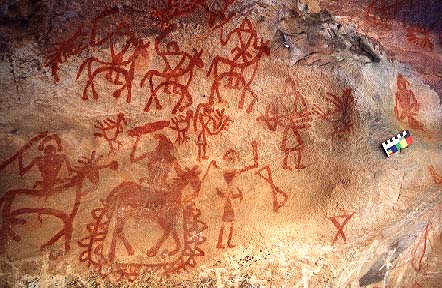The EIP Project

The propositions of an extremely early cultural sophistication in southern Asian rock art are of the utmost importance to world archaeology, to hominid evolution and to profound questions of the origins of culture, cognition and art-producing human behaviour. Extraordinary claims deserve extraordinary care in their consideration and scientific testing, and it is the purpose of the EIP Project to conduct such testing. This project has assembled an international commission to review the claims made concerning Indian early petroglyphs. It uses methods such as carbon isotope analysis, optically stimulated luminescence dating, microerosion analysis and archaeological excavation. The Commission intends to report its first findings to the international research community during 2003.
The EIP Project enjoys the backing and collaboration of several research laboratories in Australia, and it has substantial support from the Archaeological Survey of India, the Indian Council of Historical Research and the Australia-India Council in Canberra, but also from numerous Indian scholars. This project is the first to attempt scientific dating of Indian rock art as well as to provide a comprehensive chronological framework for the Palaeolithic periods of India. It is thus anticipated to result within a very short time in a massive increase in our knowledge of Indian rock art and Pleistocene archaeology.
Please proceed to the following pages:
See report in the Hindustan Times of 6 August 2008.
First progress report (November 2001)
Second progress report (December 2002)
Speech of the Minister of Culture, Agra, 28 Nov. 2004
Preliminary results of the EIP Project (2005), by R. G. Bednarik, G. Kumar, A. Watchman and R. G. Roberts
A global perspective of Indian palaeoart. An illustrated research paper in PDF format, 433 KB.
Palaeoart on Indian territory. An illustrated research paper in Russian, by Dr Arsen Faradjev, PDF format, 343 KB.
Lower Palaeolithic rock art of India and its global context, a paper reviewing this evidence in August 2007, PDF file of 650 KB.
Understanding the technology of the Daraki-Chattan cupules: the cupule replication project, a paper reviewing by Giriraj Kumar and Ram Krishna, 2014, PDF file of 1735 KB.
Before opening a PDF file you may need to open your Acrobat Reader. If you do not have Adobe Acrobat Reader please click here for a free download of the latest version.